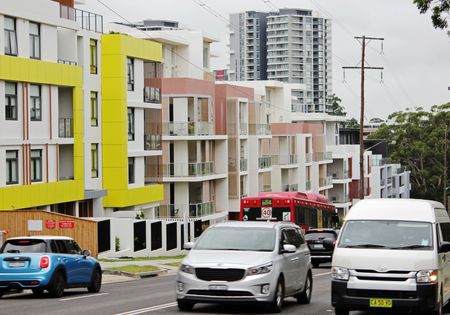SYDNEY (Reuters) – The post-pandemic slump in Australian housing is set to deepen next year as hundreds of billions of dollars of mortgage debt fixed at record low rates in 2020 and 2021 mature, forcing borrowers to refinance at punishingly high interest rates.
Here are some statistics about Australia’s indebted households, the strength of which would be critical to the Reserve Bank of Australia’s central scenario that the economy is headed for a soft landing next year.
AMONG THE MOST INDEBTED
Australia’s households are the second-most indebted in the world, with total debt standing at 119% of gross domestic product (GDP) last year, second only to Switzerland, data from the International Monetary Fund showed.
Relative to income, household debt has risen considerably in the past decades to 211% of the net disposable income in 2021, the fifth highest in the world, according to OECD. That compared with a ratio of 96.5% in the year of 1995, when OECD data begun.
Affordability is at its worst on record. The national median dwelling value was an estimated 8.5 times the median annual household income level in the first quarter this year, a record high, according to ANZ and CoreLogic.
COVID BOOM
After recording an initial dip at the onset of the COVID-19 pandemic, Australian housing values rose 24.6% between the end of March 2020 and February 2022, as hundreds of thousands of Australians took advantage of the ultra low rates to enter one of the world’s least affordable property market.
They now face a jump in interest rates to 5-6% when their fixed-rate loans expire next year, up from 2-3% currently. More than 40% of the borrowers took out fixed-rate loans at the peak of the market last year, compared with 15% before COVID.
RateCity, a mortgage comparison website, estimates Australia’s big four banks – CBA, NAB, Westpac and ANZ – have a combined over $270 billion of fixed-rate loans expiring next year, with the peak of people coming off fixed rates around mid-way through next year.
A third of fixed-rate loans will expire in 2024 and beyond.
REPAYMENTS JUMP
In its financial stability review published in October, the RBA expects almost 60% of borrowers with fixed-rate loans would face an increase in their minimum repayments of at least 40%.
Borrowers with fixed-rate loans that are due to expire by the end of 2023 would experience a median increase of around $650, about 45%, in their monthly repayments, according to the RBA.
This is based on assumption that interest rates would rise by a cumulative 350 basis points to 3.6% by the end of 2023, largely in line with the current market expectations.
With the rate hikes already delivered, RateCity estimates for a homeowner on a A$500,000, A$750,000, A$900,000 and A$1,100,000 home loan, their repayments are now A$834, A$1,251, A$1,501 and A$1,834 more than prior to the first rate hike.
(Reporting by Stella Qiu; Editing by Muralikumar Anantharaman)

